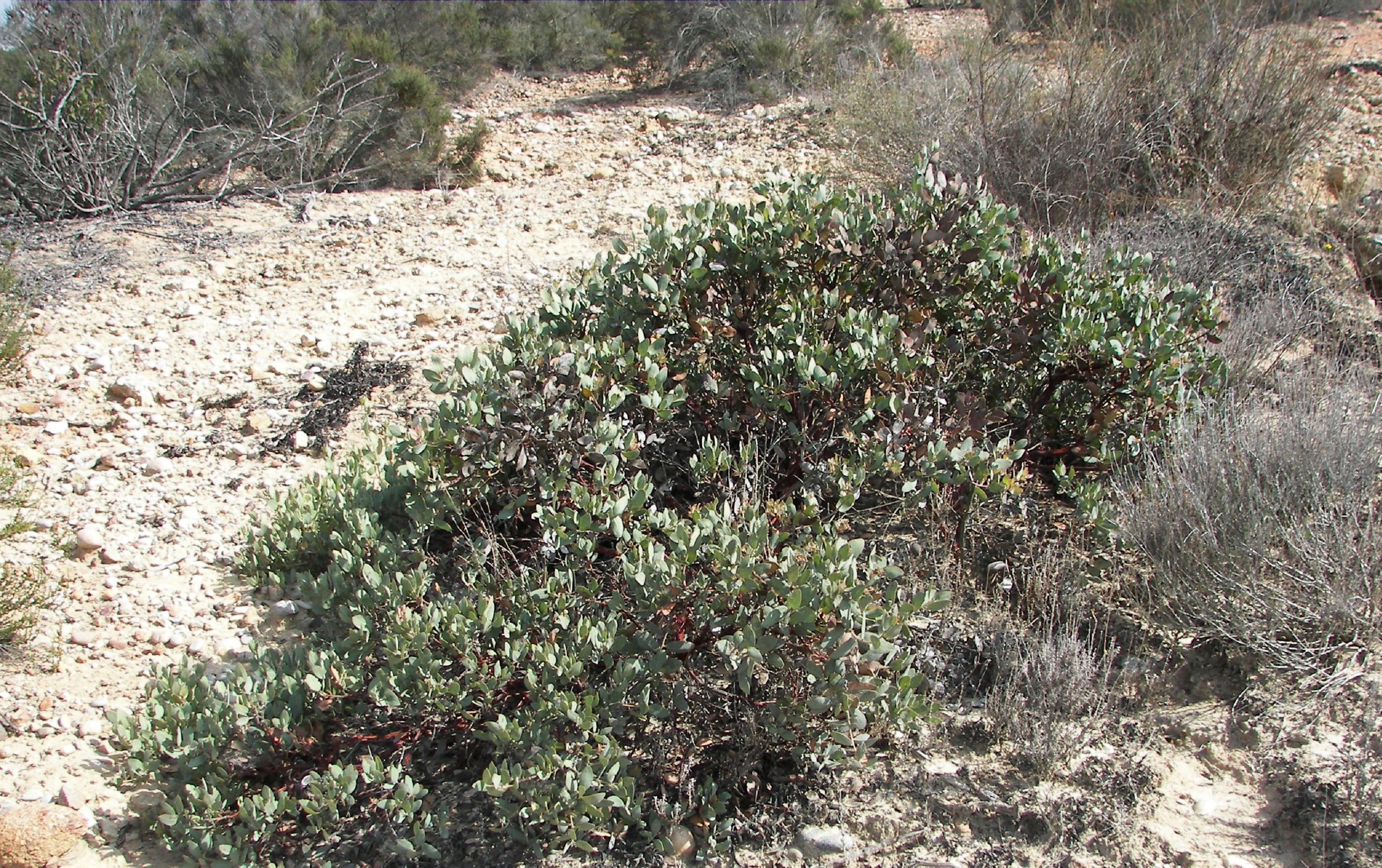
Del Mar Manzanita
Arctostaphylos glandulosa ssp. crassifolia
Arctostaphylos glandulosa ssp. crassifolia
Photo Credit: Jessie Vinje
| Historically present | |
| Between 2000 and | |
| Last 10 years |
| File name | Lead Author | Year | Type |
|---|---|---|---|
| City of Carlsbad Habitat Management Plan Annual Report and Monitoring Summary Year 7, Nov. 2010 - October 2011 | 2012 | report | |
| County of San Diego MSCP Monitoring Summary Report January 1998 - June 2007 | County of San Diego | 2007 | report |
| FINAL HABITAT MANAGEMENT PLAN for Starwood - Santa Fe Valley SECOND AMENDMENT | 2000 | report | |
| Habitat Management Plan for the Kelly Ranch Habitat Conservation Area | 2002 | report | |
| Habitat Management Plan for the Kelly Ranch Habitat Conservation Area (2008 -2013) | McConnell, Patrick; Vinje, Jessie; Spiegelberg, Markus | 2008 | report |
| Poinsettia Place Preserve Management Plan | 2011 | report | |
| San Diego Rare Plant Monitoring Plan: Fiscal Year 2011 | Greer, Keith; McEachern, Kathryn; Tracey, Jeff | 2011 | report |
| Summary of Monitoring Results for Actostaphylos glandulosa ssp. crassifolia | 2002 | report | |
| Summary Results of Rare Plant Field Monitoring City of San Diego MSCP | 2009 | fact sheet |
San Diego County and Baja California, Mexico [2].
Twenty-one occurrences on Conserved Lands in MUs 4 (Mission Trails Regional Park), 6 (Carmel Mountain Preserve, City of Carlsbad Municipal Golf Course, Del Mar Highlands, Del Mar Mesa Open Space, Kelly Ranch Habitat Conservation Area, Los Penasquitos Canyon Preserve, Lusardi Creek Preserve, Manchester Mitigation Bank, Oakcrest Park, Overlook Park, Poinsettia Place, Rancho La Costa Habitat Conservation Area, San Dieguito Regional Park, The Crosby at Rancho Santa Fe), and 7 (Crest Canyon Preserve, Overlook Park, Torrey Pines State Natural Preserve).
FE [2].
Maritime and sandy chaparral [2]. Sandstone terraces and bluffs [3]. Mesa topography in naturally fragmented habitat.
Ericaceae family [2].
Perennial burl-forming evergreen shrub [2, 3]. Dependent on fire for germination [3].
Bloom period is December- April [2].
Possibly can regenerate from burls and seeds [3]. Plants can produce a large number of seeds, but with large annual fluctuations [4]. Small seed bank. Flowers are self-incompatible and are visited by flies, bees, and bee-flies [4, 5]. Fruits generally fall close to parent plant where they are consumed by rodents [4]. Occasionally, seeds are eaten by foxes and coyotes and transported a distance.
Urbanization, agricultural conversion, fire and edge effects (nonnative plants, fuel modification, and human access) [3].
Easily confused with eastwood manzanita (Arctostaphylos glandulosa ssp. glandulosa) [1]. Monitored every 3 years by the City of San Diego. Buds typically sprout after fire [3].
[1] Cheong, H., B. Miller, K. Martinez, P. Seiley, and M. Johnson. (2002). City of San Diego Multiple Species Conservation Program.
[2] CNPS, Rare Plant Program. 2016. Inventory of Rare and Endangered Plants (online edition, v8-02). California Native Plant Society, Sacramento, CA. http://www.rareplants.cnps.org, accessed 02 September 2016.
[3] U.S. Fish and Wildlife Service. (2010). ( Del Mar manzanita ) 5-Year Review : Summary and Evaluation. Carlsbad, California.
[4] Keeley, J. (1977). Seed production, seed populations in soil, and seedling production after fire for two congeneric pairs of sprouting and nonsprouting chaparral shrubs. Ecology, 58(4), 820–829.
[5] Moldenke, A. (1976). California Pollination Ecology and Vegetation Types. Phytologia, 34(4), 305–361.